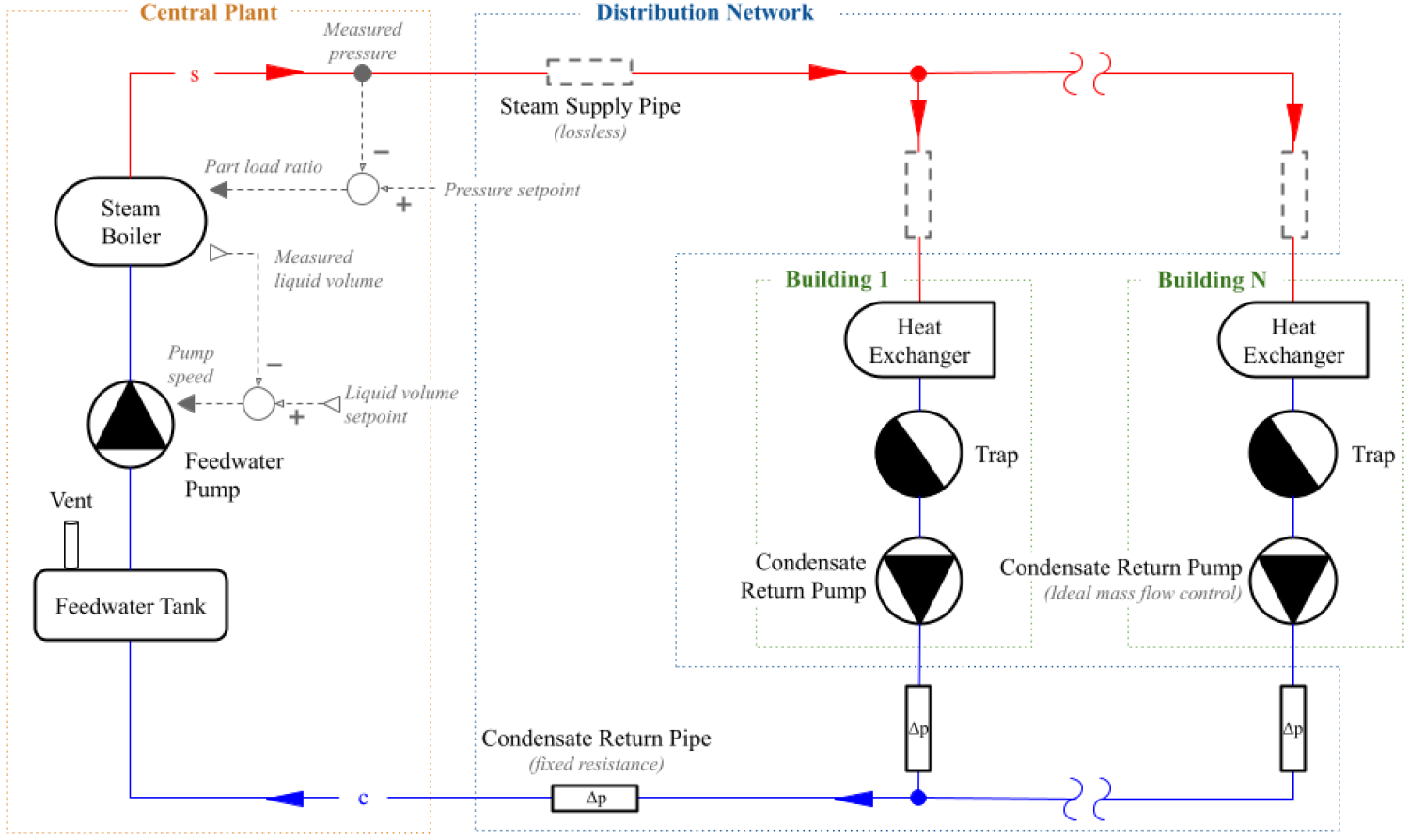Paper on Fast and Accurate Modeling Approach for Water and Steam Thermodynamics with Practical Applications in District Heating System Simulation has been published in Energy

Do you know that 97% of district heating systems in the US are steam based systems? However, we do not have Modelica models which can simulate such system effectively for practice. As a part of large collaborative research in developing URBANopt and Modelica Buildings library, we created a fast and accurate modeling approach for water and steam thermodynamics for real-world district heating system practice. This work presents a novel split-medium approach that implements numerically efficient liquid water models alongside various water/steam models, breaking costly algebraic loops by decoupling mass and energy balance equations. New component models for steam DH systems are also presented. The models are implemented in Modelica language and evaluated accuracy and computing speed across multiple scales: from fundamental thermodynamic properties to complete districts featuring 10 to 200 buildings. Compared to district models with the IF97 water/steam model and equipment models from the Modelica Standard Library, the new implementation improves the scaling rate for large districts from cubic to quadratic with negligible compromise to accuracy. For an annual simulation with 180 buildings, this translates to a computing time reduction from 33 to 1–1.5 h.
This work has been published under the title "A Fast and Accurate Modeling Approach for Water and Steam Thermodynamics with Practical Applications in District Heating System Simulation" in the journal Energy. The full paper is available here.
The first author of this paper, Kathryn (Katy) Hinkelman, is a Ph.D. student in the SBS Lab. Her research focuses on modeling and simulation of community-scale energy systems using Modelica language, including traditional district heating and cooling systems and innovative biomimetic (nature imitating) designs for future sustainable and resilient communities.
Congratulations to Katy on publishing this paper!

